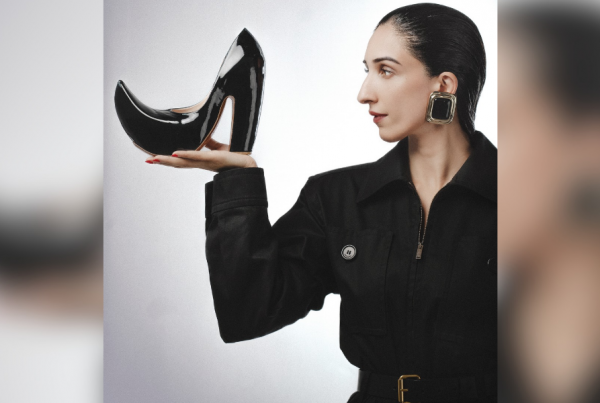Fabric is. Fashion isn’t
(Instep Today, The News 15.1.2011)
While having lunch at Aylanto last week I noticed a pair of legs walk in and they were no ordinary pair of legs. Clad in opaque black tights crowned at the bum with a tight belted mini-dress, these legs were of the fashionable variety. Needless to say the woman wore boots; high heeled, spiked patent leather boots.
I spotted another similar specimen at Butler’s the other evening. A tall, rather Amazonian woman walked in wearing very well tailored, high waisted trousers, heels (despite her towering height) and she wore her long hair in a casual knot somewhere down the middle of her back. Another fashion statement.
They’re all over the place.
Sometime in winter – approximately a month and a half ago – women packed away their nine-yard marquees and decided to pull out their woolies. That’s when the generic ‘auntie’ dressers – those who weigh the value of winter in cashmere or pashmina shawls – got out-numbered by the trendy. Trendy women being those who invest in coats and jackets, Uggs, warm tights and even gloves and hats. They usually shop abroad thus making fashion statements worth remembering, the Aylanto and Butler babes being prime examples. (Yes, Jack Frost’s travel advisory for Karachi has been lifted!)

Ali Xeeshan showed this collection in November 2010 and the quilted silks and velvets were perfectly desirable for winter but unfortunately they still have not been released in the market.
Fashion statements are screaming out loud this season!
There are clothes and then there is fashion, the latter defined by the ability to make a statement. A plain tee shirt is simply just that but it becomes a statement the minute you tag it with a line like ‘Think: it makes the government nervous!’ It immediately gives the wearer an air of activism and you know he has a Che Guevara tee stashed away too. A fashion statement, taking it further, defines an individual while a beautiful garment will cast you as one out of millions of people who simply want to look beautiful.
Had you asked me a couple of years ago I wouldn’t have blinked an eyelid before saying that Pakistani women were all conformists when it came to fashion. They all wanted to blend in beautifully rather than stand out. But since fashion in Pakistan is now gradually being predetermined by designers (as opposed to housewives with tailor operations) this got me wondering what kind of statements different labels were making these days… Sonya Battla: Elite
Kamiar Rokni: Awami: Proud to be Pakistani!
Deepak Perwani: Heritage belongs in the wardrobe not the attic
Maheen Karim: Tradition is tedious
Nomi Ansari: Colour is the path to happiness.
Fahad Hussayn: The darker the better
Khaadi: Redefining Gandhi
Amir Adnan: Redefining Jinnah
HSY: ABCD…as in American Born Creative Desi
Sana Safinaz: High maintenance Sublime: I love the world
Ali Xeeshan: I love myself
Body Focus Museum: woman of the world
That said, fashion statements in Pakistan are being made by women a little too late in life. They acquire a taste for style when they are in their thirties and are comfortably married to a big bank balance (or in rare cases are working for one). Let’s face it, how many young kids can afford to buy high-end labels? Piggy banks do not hold the hundreds of thousands required.
The same applies to expensive brands all over the world but the difference in the west is that fashion diffusion is rampant and street wear is fashionable as well as affordable. Plus, kids live the kind of lifestyle to carry it off. In Pakistan, young girls are either dependent on their mothers’ tailors or on the convenient jeans and tee shirt staple and not many of them know how to tweak that into a statement. That and the fact that teenager girls mostly dress with either convenience or a ‘rishta’ in mind. One option leads to style slobs and the other to bridals, neither is conducive to becoming trendy.
Add to that dilemma the fact that there are very few brands that actually fall under the ‘affordable’ bracket and they too are available in only pint size portions. Pint size meaning that they are not widely accessible all over the country. Fabric is, fashion isn’t. Imagine even half of the above mentioned designers being available for a Rs 2000 to Rs 3000 price bracket. While most people can’t even afford that, this is how much the average dresser spends on a tailored jora. To change fashion we need more fashion designers to change (their pricing). This is the wish list…
Sonya Battla: Those cutting edge patterns made affordable
Kamiar Rokni: Already on the checklist, the TIA line begins at Rs 900!
Deepak Perwani: If you’re taking inspiration from the masses (the coloured Milan collection incorporated the dastarkhwan print) then at least cater to the masses by bringing your prices down.
Maheen Karim: Her cotton range (Rs 3000 – 4000) is a hot seller but the production could be boosted for higher impact.
Nomi Ansari: Affordable is anything under Rs 5000 not Rs 15,000!
Fahad Hussayn: Attitude: yes. Affordable: yes. Available easily: no.
Khaadi: On the success list, way to go Khaadi!
Amir Adnan: Sherwani Express is redefining formals.
HSY: Has the formula right but needs to implement it a little strongly.
Sana Safinaz: From affordable summer voile to affordable formals, they have it all under control.
Sublime: We understand that less is more but more of Sublime would be great!
Ali Xeeshan: Great statement but where?
Body Focus Museum: A casual line has been introduced and it is wow!
The three A’s: Attitude, Access and Affordabiliy is precisely what needs to change if we want a fashion revolution in Pakistan. And yes, I understand that style is somewhere at the tail end of revolutions this nation needs but there’s no harm putting it down on the list anyway.













